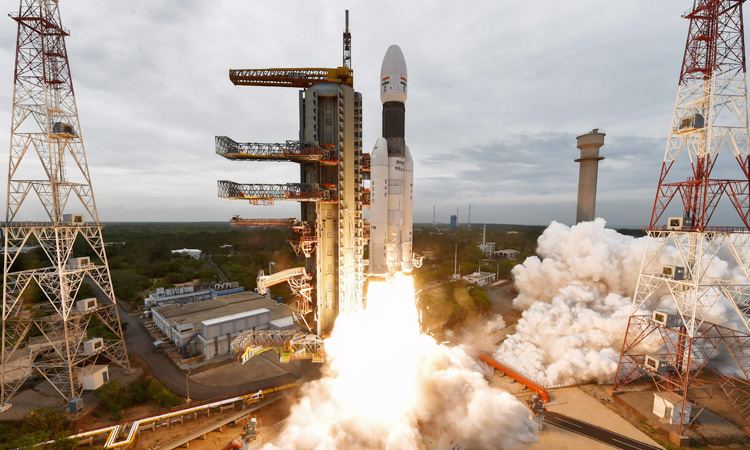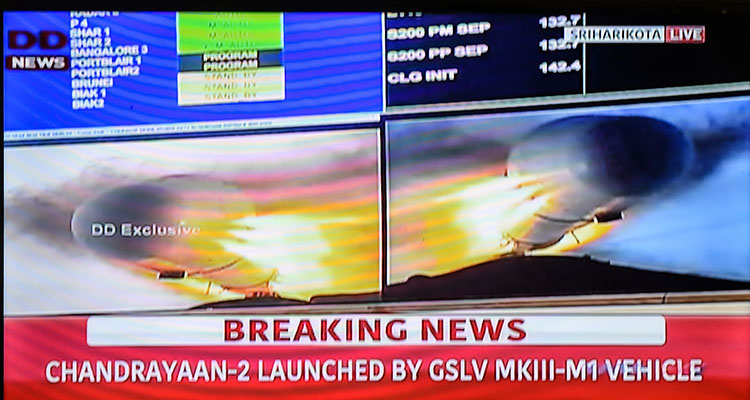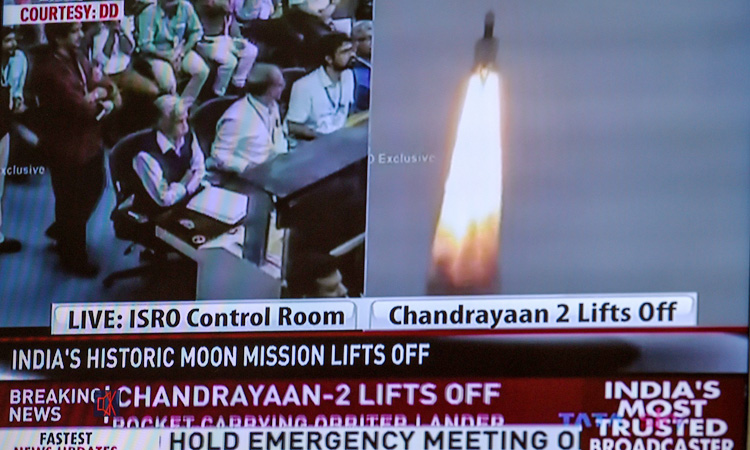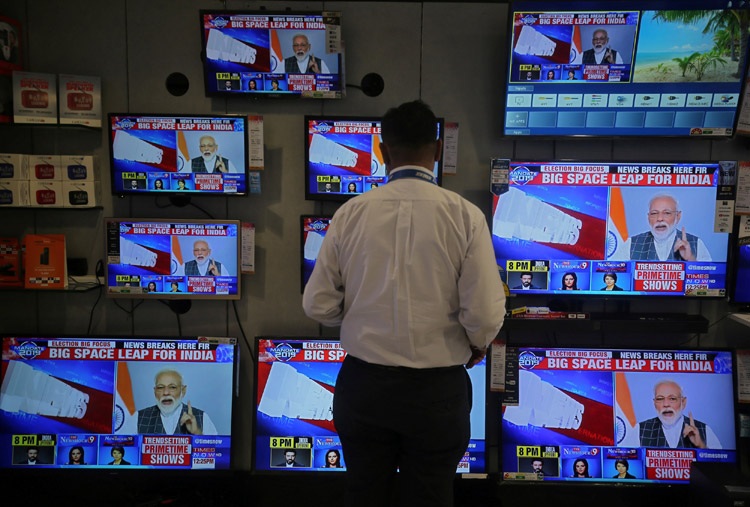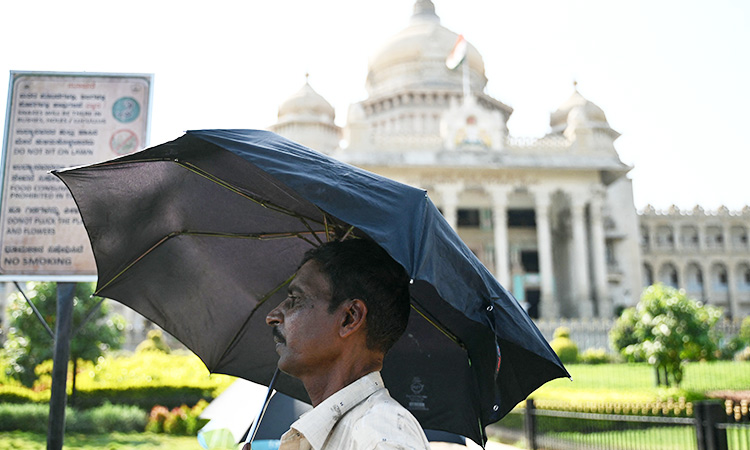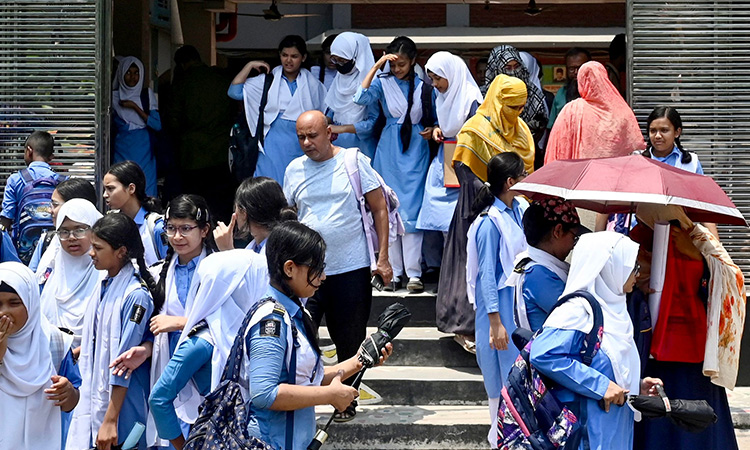'Welcome, buddy!' Chandrayaan-2 Orbiter welcomes Chandrayaan-3 lander
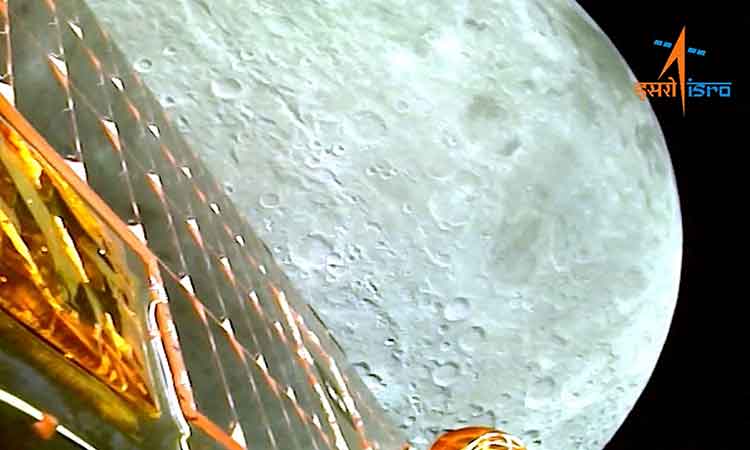
A view of the moon as viewed by the Chandrayaan-3 lander during Lunar Orbit Insertion. Reuters
India’s latest moon lander has established communication links with the Chandrayaan-2 mission’s orbiter that is circling the moon since 2019, said Indian Space Research Organisation (ISRO). "Welcome, buddy!” said the Chandrayaan-2 Orbiter to the lander that was carried by the Chandrayaan-3 spacecraft this year. "Two-way communication between the two is established,” ISRO tweeted on Monday.
The space agency also said the Mission Operations Complex had now more routes to communicate with the lander. In other words, the Chandrayaan-2 Orbiter will be the backup communication channel for ISRO with the lander. The Chandrayaan-3 spacecraft comprises a propulsion module (weighing 2,148kg), a lander (1,723.89kg) and a rover (26kg). Recently, the lander module got detached from the propulsion module and the latter is also circling the moon at an altitude of 25 km x 134 km.
The systems of the propulsion module is being checked and would await the sunrise at the designated landing site. The powered descent is expected to commence on August 23, 2023, around 5.45pm IST,” ISRO had said. The Chandrayaan-3 mission was launched on July 14 from India's main space port in the southern state of Andhra Pradesh.
Since then, it has looped through progressively wider-ranging orbits of Earth, transferred to a lunar orbit and emerged as a focus of national pride and of global interest after Russia's failed attempt to beat it to a landing on the moon's south pole. Here are key facts about the Indian Space Research Agency's (ISRO) Chandrayaan-3 mission. The Mission The Chandrayaan-3 is aimed at the lunar south pole, a region with water ice, or frozen water, that could be a source of oxygen, fuel and water for future moon missions or a more permanent moon colony.
If it lands successfully, the Chandrayaan-3 is expected to remain functional for two weeks, running a series of experiments including a spectrometer analysis of the mineral composition of the lunar surface. The Chandrayaan-3 lander stands about 2 metres tall and has a mass of just over 1,700kg (3,74786 lb), roughly on par with an SUV. It's designed to deploy a smaller, 26-kg lunar rover. NASA administrator Bill Nelson said in a statement to Reuters that the US space agency was "looking forward" to what would be learned from the Indian mission. Earlier attempts, challenges India's previous attempt to land on the lunar south pole failed in 2019.
Chandrayaan-2 successfully deployed an orbiter but its lander and rover were destroyed in a crash near where the Chandrayaan-3 will attempt a touchdown. Rough terrain is one of the complications for a south pole landing. ISRO scientists say they have made adjustments that make it more likely the current mission will stick its landing. That includes a system to broaden the potential landing zone. The lander has also been equipped with more fuel and sturdier legs for impact. Russia's first moon mission in 47 years failed over the weekend when its Luna-25 spacecraft crashed into the moon.
A private Japanese space startup, ispace, failed an attempted lunar landing in April. olitial and economic t0es]LITICAL AND ECONOMIC STAKES A successful mission would make India only the fourth country to successfully land on the moon, after the former USSR, the United States and China, and mark its emergence as a space power, just ahead of national elections next year.
Prime Minister Narendra Modi's government is also looking to spur investment in private space launches and related satellite-based businesses. India wants its private space companies to increase their share of the global launch market by fivefold within the next decade. Modi said when the moon mission launched that ISRO was writing "a new chapter in India's space odyssey" and elevating "the dreams and ambitions of every Indian." ISRO plans to telecast the planned landing starting from 5.20pm IST on Wednesday.
Agencies
